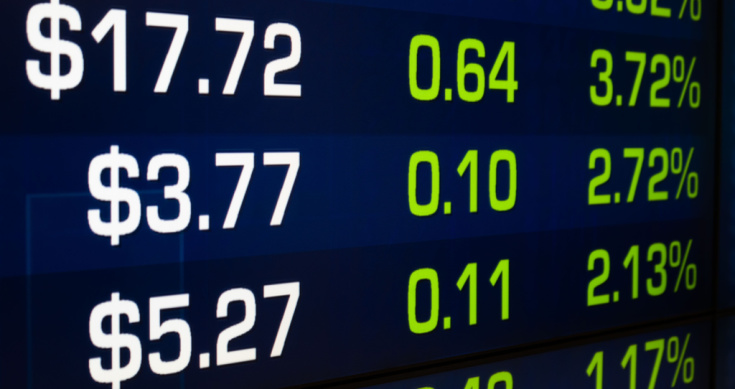
NRMA demutualised in June 2000 which made Insurance Australian Group (IAG) one of the most broadly held shares in the country. 16 years later IAG is still widely held by many Australians except now IAG is taking active steps to shrink the number of Australian investors that hold IAG through their buy-back offer.
IAG shareholders have already received letters directly from IAG offering to buy their shares back. When opening these letters tens of 1,000’s of investors are confronted with the question, ‘do I sell my shares back to the company’?
We’ll take a logical approach to see whether the IAG buy-back stacks up for investors.
For those of you wondering, yes, Telstra have also recently offered a buy-back which is much more appealing. You can read more about Telstra’s offer and whether it is worthwhile here
What is a buy-back?
IAG offer to buy your shares directly from you. There is no broker and no brokerage to pay because the whole transaction is performed off-market. Hence the full name ‘Off-Market Buy-Back’ (OMBB).
For full details of the IAG offer click here
What is so interesting about this buy-back (OMBB)?
Three reasons:
- Easy way to sell shares
- Franking credits
- Capital losses
Easy way to sell shares
If you’re on one half of the Australian adult population you’ve never transacted in shares before and selling shares is a mystery. Since NRMA shareholders received their IAG shares in June 2000 brokers have been asked ‘how do I sell my NRMA (IAG) shares?’. This OMBB is now the easiest answer.
The IAG OMBB is offering the easiest way to sell shares possible, almost as easy as receiving the IAG shares in the first place. Sign the form, post it back and be ride of your shares. This may satisfy the majority of remaining unintended shareholders of IAG that have been holding shares since 2000 because they simply didn’t know how to sell.
For reference, the NRMA / IAG transaction was on 19 June 2000 at $1.78 per share, or $2.75 if the 181 additional shares were purchased through the Listing facility – more details here.
Franking Credits
The OMBB is offering approximately $0.82 in franking credits per share.
That’s a lot more than the $0.055 in franking we get from IAG dividends every six months. So for those investors who value franking credits, it’s time to pay attention (calculations below).
Capital losses
Capital losses are appealing to some investors for offsetting capital gains.
What’s interesting is that many long-term shareholders of IAG have held off selling the shares they received 2000 in the demutualisation of NRMA process. This OMBB may be the best opportunity those investors get to minimise capital gains while still ‘profiting’.
This can be a tricky situation, so make sure you check it all over with your accountant first or get the appropriate tax advice. This article is not tax advice, and while we’re talking about disclaimers, this article is not personal advice either.
How many franking credits are on offer?
The franking credits are where the devil is in the detail.
This offer has three main moving parts to this buy-back. The variables are:
- The current share price
- The final price when the offer closes
- The discount to the final price
The variables to use:
While the current price will keep moving, it is the easiest piece of information to obtain – just look online. We’ll use Tuesday’s (23 August 2016) close price of $5.69 for our calculations.
The final price is the price when the office closes. Just like any future date, the price could be higher or lower than today’s price. We’ll use today’s closing price $5.69 as the best estimate for our calculations.
The discount is a bit like the price of a house at auction, it all depends on how those participating feel on the day. The discount range for the Telstra offer is between a 4% through to a 14% discount to the final price. Again, no one knows, but we’ll use the most conservative numbers for our calculations being a 14% discount.
Calculations:
If we buy new shares today on the market, we will pay $5.69.
Tendering shares into the offer:
If we intend to tender these shares into the OMBB offer at the maximum discount of 14% (most conservative calculation) that’s $5.69 x 0.86 = $4.89 known as the ‘Tender Price’.
In other words, we’re expecting to be 14% worse off that if we sold shares on the share market today – taking shares worth $5.69 today and expecting to receive a total of $4.89 in return in about six weeks’ time = expected loss of $0.80 per share.
Capital Return:
When selling the shares into the offer we are paid two separate amounts for our shares; the capital component and a ‘special’ dividend.
The capital component is fixed at $2.99. This means the shares we own today that are currently trading at $5.69 today will be sold for $2.99 = $2.70 lower than the current market value.
It is important to note that each investor’s loss will be different, depending on how much they paid for their shares at the time of purchase.
Special Dividend:
The special dividend is the difference between the Tender price and the capital component of $2.99. In this example, the Tender price is $4.89 – $2.99 = $1.90
The special dividend is fully franked, and this is where it all starts to get interesting.
A $1.90 fully franked dividend has $0.82 franking credits ($1.90 / 0.7 – $1.90 = $0.82).
Normal Dividend:
If we buy the shares today, we are also eligible for the normal Telstra dividend of $0.155 per share. That normal dividend also comes with $0.0664 franking credits per share.
Although, arguably, this is normal dividend will already be priced into the Tender Price. Considering the payment is a fully franked dividend either way, the net is the same except if you’re note expecting the share price to fall the full cash dividend amount (what normally happens to ASX-listed shares after the share ‘lose’ the dividend, or trade ‘ex-dividend).
Franking credits:
There is $0.82 of franking credits from the special dividend and if the normal dividend is to be added back into the equation that’s another $0.055 franking credits, or a total of $0.875 franking credits per share.
However, we’ll just use the $0.82 and assume the normal dividend is included in the current share price
Final Numbers:
The shares are trading today for $5.69 today
Based on the example prices above, the total amount coming back is $5.71 ($2.99 + $1.90 + $0.82 = $5.71). That’s $0.02 higher that today’s closing price which is hardly appealing
Even if the normal dividend were to be added in, the total amount coming back is $5.895 ($2.99 + $1.90 + $0.82 + $0.13 + $0.055 = $5.895). That’s a share price $0.205 higher than today’s share prices.
Neither of these scenarios are very appealing to investors, so most brokers will not recommend participating in this offer unless:
- There is a surge in the IAG share price before the Tender Period closes
- Investors want an brokerage-free way to sell shares
- Investors’ accountants have found a crafty way to make these capital losses stack up for the individual
Words of caution
Different entities have differing tax treatments that impact investor’s net returns. Not all investors are eligible for franking credits and this can vary depending on other positons held within a portfolio.
This is not personal advice. Consult with your broker and taxation specialist to see whether you’re eligible for the franking credits and how this offer may impact your personal circumstances.
Email questions@sharecafe.com.au for more information on this offer and similar trading opportunities.










